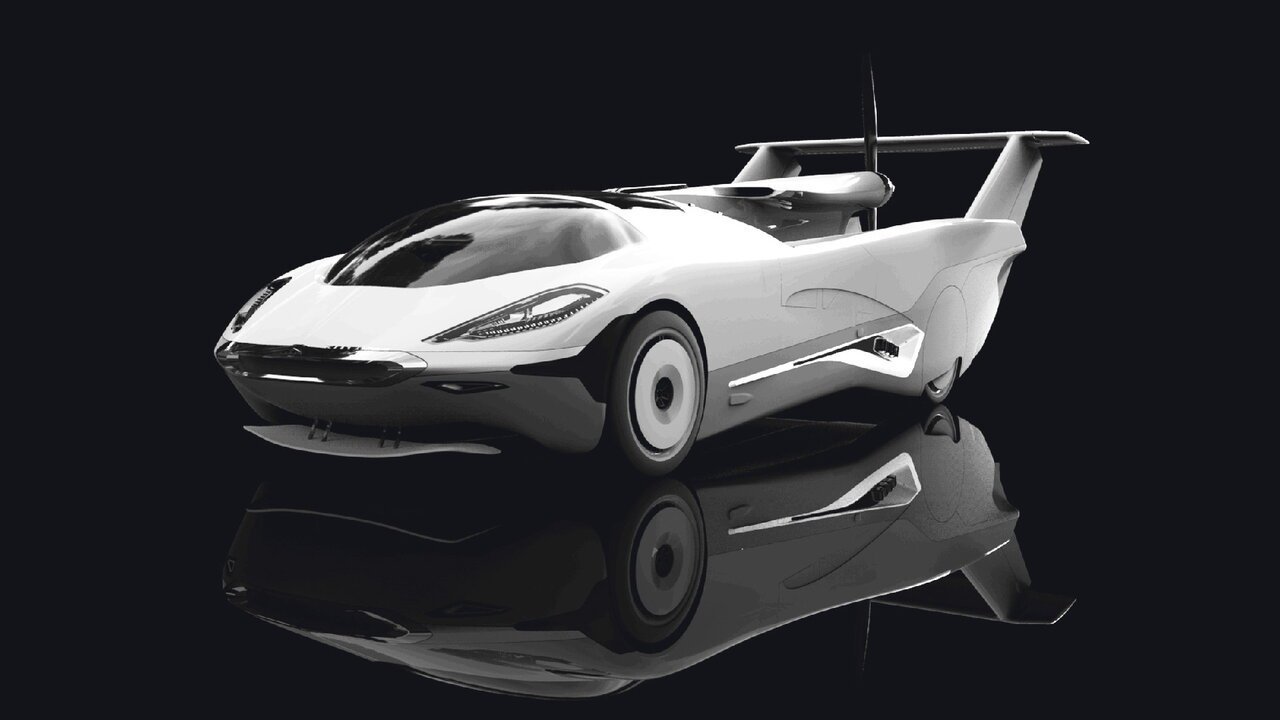For over a century, the dream of a flying car has been a shimmering symbol of the future—a promise of liberation from traffic-choked roads, of three-dimensional freedom, of cities without congestion and personal aircraft parked in every driveway. From the pages of Jules Verne and the animation cells of The Jetsons, flying cars have lived in the collective imagination, always seeming just over the horizon.
But something has shifted.
What was once the domain of science fiction is now steadily becoming science fact. Around the world, engineers, innovators, aerospace pioneers, and automotive titans are racing toward a future where the skies are not just for jets and drones—but for you, your groceries, your job commute, and maybe even your next dinner delivery.
At the core of this transformation are five extraordinary flying car prototypes—each pushing the limits of design, function, and flight technology in their own remarkable ways. These are not vague concepts or distant fantasies. These are real machines, undergoing tests, logging miles, navigating the regulatory maze, and preparing to take the world to new heights—literally.
Let’s lift off.
Defining the Flying Car: More Than Just a Car With Wings
Before we dive into the top five prototypes, let’s pause to clarify what we mean by “flying car.”
Technically, flying cars fall under the broader category of eVTOLs (electric Vertical Take-Off and Landing vehicles) or hybrid air vehicles, depending on their propulsion systems and design. But for this discussion, a “flying car” refers to any vehicle that:
- Is capable of both ground travel and sustained flight.
- Is designed for personal or small group transportation.
- Aims to integrate into everyday urban or regional mobility.
- Offers vertical or short take-off/landing to minimize infrastructure needs.
Some designs lean more toward roadworthy aircraft, while others resemble cars that just happen to fly. The exciting diversity of approaches reveals not only the richness of the concept but also the growing technological maturity across different industries.
Prototype #1: The Klein Vision AirCar – The Shape-Shifter
Slovakian company Klein Vision made global headlines when their AirCar prototype took to the skies—and then drove off the runway like a sports coupe.
The AirCar is a true hybrid machine. When in driving mode, it resembles a futuristic two-door vehicle with flowing aerodynamic lines. With the push of a button, its wings unfurl from the sides, and a rear-mounted propeller deploys. In less than three minutes, the car transforms from roadster to light aircraft, ready for takeoff from a standard runway.
Powered by a 1.6L BMW engine and a fixed propeller, the AirCar can reach speeds of 190 km/h in the air and about 160 km/h on the road. It boasts a range of over 1,000 km in flight, giving it genuine intercity travel potential.
But the AirCar’s real brilliance lies in its transformation mechanism. It’s not just a plane that can drive; it’s a seamlessly integrated dual-mode vehicle that feels equally at home in the sky and on the street. With over 200 takeoffs and landings successfully completed in test flights, it has already received a Certificate of Airworthiness from the Slovak Transport Authority—a critical milestone.
Imagine leaving your garage, driving to a regional airport, unfolding your wings, and taking off for another city without ever leaving your seat. That’s the magic Klein Vision has captured.
Prototype #2: PAL-V Liberty – The Gyroplane That Hits the Road
The PAL-V Liberty is not your average flying car—it’s a three-wheeled gyroplane with a road-going soul. Developed in the Netherlands, the Liberty is designed to comply with both aviation and road regulations, and it’s already available for pre-order.
At first glance, the Liberty looks like a futuristic trike with a folded rotor on top. In driving mode, it’s a compact, agile vehicle with seating for two and a design that hugs the road. When flight is needed, the rotor extends, the tail unfolds, and the Liberty becomes a gyroplane—able to lift off with a short runway, fly at altitudes of up to 3,500 meters, and cruise at speeds of 160–180 km/h.
Unlike helicopters, which use powered rotors, gyroplanes use unpowered rotors for lift and an engine-driven propeller for thrust. This gives the Liberty excellent stability, safety in engine-off scenarios, and a flight profile that’s well-suited for regional travel.
On the ground, it reaches speeds of 100 km/h and handles like a performance car. What sets it apart is its complete regulatory alignment—the PAL-V Liberty is designed to be legally drivable on roads and fully certifiable as a light aircraft under EASA and FAA regulations.
For those who want true road-to-sky functionality today—not someday—the Liberty is perhaps the closest thing to a real-world flying car you can (almost) buy right now.
Prototype #3: XPeng X2 – The Sci-Fi Skyscraper Hopper
While the first two prototypes straddle the line between car and airplane, China’s XPeng X2 takes a bolder step—it’s a fully electric, autonomous-capable flying pod straight out of a sci-fi movie.
Developed by XPeng AeroHT, a subsidiary of Chinese electric vehicle giant XPeng Motors, the X2 is a two-seater eVTOL with a sleek, carbon-fiber body and eight propellers mounted on four arms. It’s designed primarily for urban air mobility—short, city-to-city hops at low altitude and high safety.
There are no wheels. No steering wheel. No engine in the traditional sense. The X2 is designed for vertical take-off and landing from rooftops or landing pads, not for road use. It represents a different but equally transformative vision of the flying car—one where roads are obsolete, and air corridors define urban movement.
Powered entirely by batteries, the X2 has a flight time of approximately 35 minutes and can reach a top speed of 130 km/h. Its compact size and zero-emissions profile make it ideal for cities battling congestion and pollution.
Perhaps most astonishing is its autonomous capability. The X2 is being tested for fully pilotless operation, allowing passengers to input a destination and let the onboard AI handle the rest.
It’s not a car you drive—it’s a personal flying pod that drives itself.
Prototype #4: Samson Sky Switchblade – The Personal Jet Car
What if your flying car didn’t just float or hover—but soared like a private jet?
Enter the Samson Sky Switchblade, an American-made hybrid vehicle that combines the form of a sleek sports car with the performance of a light aircraft. It looks fast even when parked.
Unlike many eVTOLs, the Switchblade uses a hybrid propulsion system powered by a three-cylinder, liquid-cooled engine. In ground mode, it’s a muscular, enclosed three-wheeler capable of highway speeds and handling. In air mode, it deploys a tail boom and wings from internal compartments and transforms into a small airplane with a cruise speed of 280 km/h and a flying range of around 725 km.
This is not a vehicle for short hops or sightseeing. The Switchblade is designed for business travelers, long-distance commuters, and air-tourism entrepreneurs. It takes off and lands from conventional runways, not vertically—but what it offers is range, speed, and serious travel potential.
It’s registered as an experimental aircraft and is being refined to meet FAA standards. The company aims to make the Switchblade affordable enough for private pilots, with future versions potentially being autonomous or semi-autonomous.
The Switchblade is more than a flying car. It’s a personal jet that fits in your garage.
Prototype #5: Alef Model A – The Disruptor With a Secret
The last of our top five is perhaps the most radical—and most mysterious: the Alef Model A, developed by Alef Aeronautics, a California-based startup that has received notable backing from tech and venture capital communities.
What sets the Alef Model A apart is its VTOL capability in a traditional car shape. From the outside, it looks like a slightly futuristic sedan. But beneath the surface lies an astonishing innovation.
Rather than unfolding wings or rotors, the Model A uses ducted fans embedded in the chassis, allowing it to take off vertically while maintaining a low, car-like profile. It can drive on standard roads, park in a normal space, and still achieve vertical lift when necessary—without needing runways or propeller arms.
The concept is to allow a seamless switch between road and air without transformation sequences. Imagine being stuck in traffic, then quietly lifting off and flying above the jam to your destination.
The prototype has demonstrated short hover flights and is targeting a range of 320 km on the road and 180 km in the air. What makes Alef especially exciting is its vision for full-scale urban integration—its long-term roadmap includes AI navigation, swarm coordination, and affordability for middle-class consumers.
In July 2023, Alef became the first company to receive a Special Airworthiness Certification from the FAA for a vehicle of this kind—a sign that regulators are taking it seriously.
Designing for the Skies: The Engineering Challenge
Creating a flying car isn’t just about bolting wings onto a vehicle. It requires solving profound engineering challenges:
- Weight vs. Lift: Vehicles must be light enough to fly, but strong enough to survive crashes and carry passengers.
- Power Density: Electric propulsion is ideal for urban use, but batteries need to be light, compact, and long-lasting.
- Redundancy: Safety is paramount. Multiple propellers, fail-safes, and emergency landing options are essential.
- Noise Pollution: Cities won’t tolerate constant buzzing. Quiet flight is key to urban adoption.
- Flight Control: Autonomous systems must handle navigation, collision avoidance, and air traffic.
Every prototype tackles these differently. Some favor speed and range. Others go all-in on vertical flight. Some prioritize user experience; others focus on certification.
And that’s what makes this field so exhilarating.
The Road Ahead: Legal, Ethical, and Social Implications
The future of flying cars isn’t just a question of technology—it’s a social transformation.
Airspace regulation is still catching up. Who will manage thousands of vehicles in city air corridors? How will we prevent mid-air collisions? What about noise zones, emergency protocols, or privacy?
Infrastructure is another hurdle. Will cities build skyports, landing pads, and charging hubs? Will homes have rooftop hangars? Can we retrofit suburbs for air mobility?
And then there are ethical concerns. Who gets access to flying cars? Will they worsen inequality by creating an elite class of sky commuters? Or will scale and affordability open the skies to all?
Environmental impact is also on the radar. Will eVTOLs reduce emissions overall, or simply shift pollution to a new arena?
These are questions we must address—because flying cars are not coming someday. They’re coming now.
Conclusion: The Sky Is No Longer the Limit
Flying cars have been a dream for generations. Today, they are becoming a reality, not through one solution, but through many—each with its own strengths, risks, and revolutionary potential.
The Klein Vision AirCar dazzles with its elegance and transformation. The PAL-V Liberty blends gyroplane safety with road-readiness. The XPeng X2 dares to remove the pilot entirely. The Switchblade brings private aviation to your garage. The Alef Model A reinvents lift and landing.
Together, they represent not just prototypes—but prototypes of a new era.
An era where traffic jams are optional. Where the morning commute ends with a soft landing on your office rooftop. Where ambulances fly, cargo floats over congestion, and families travel across states in a blink.
The sky, once a boundary, is becoming a highway.
The dream of the flying car is no longer science fiction.
It’s science flight.






